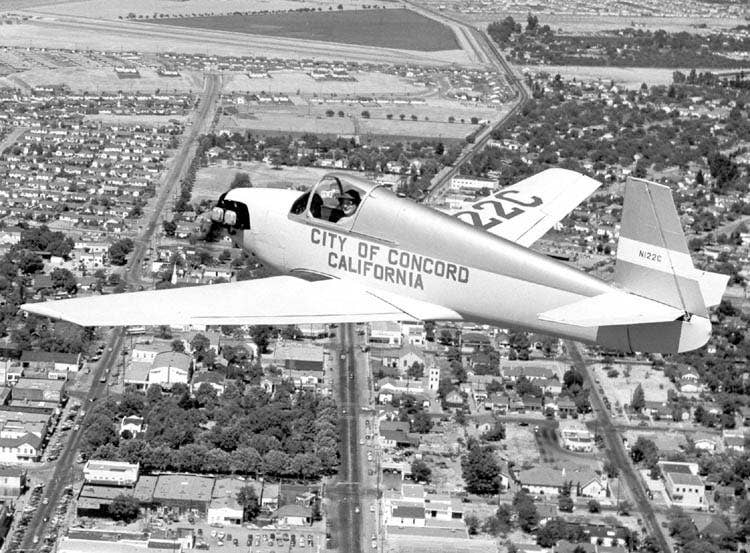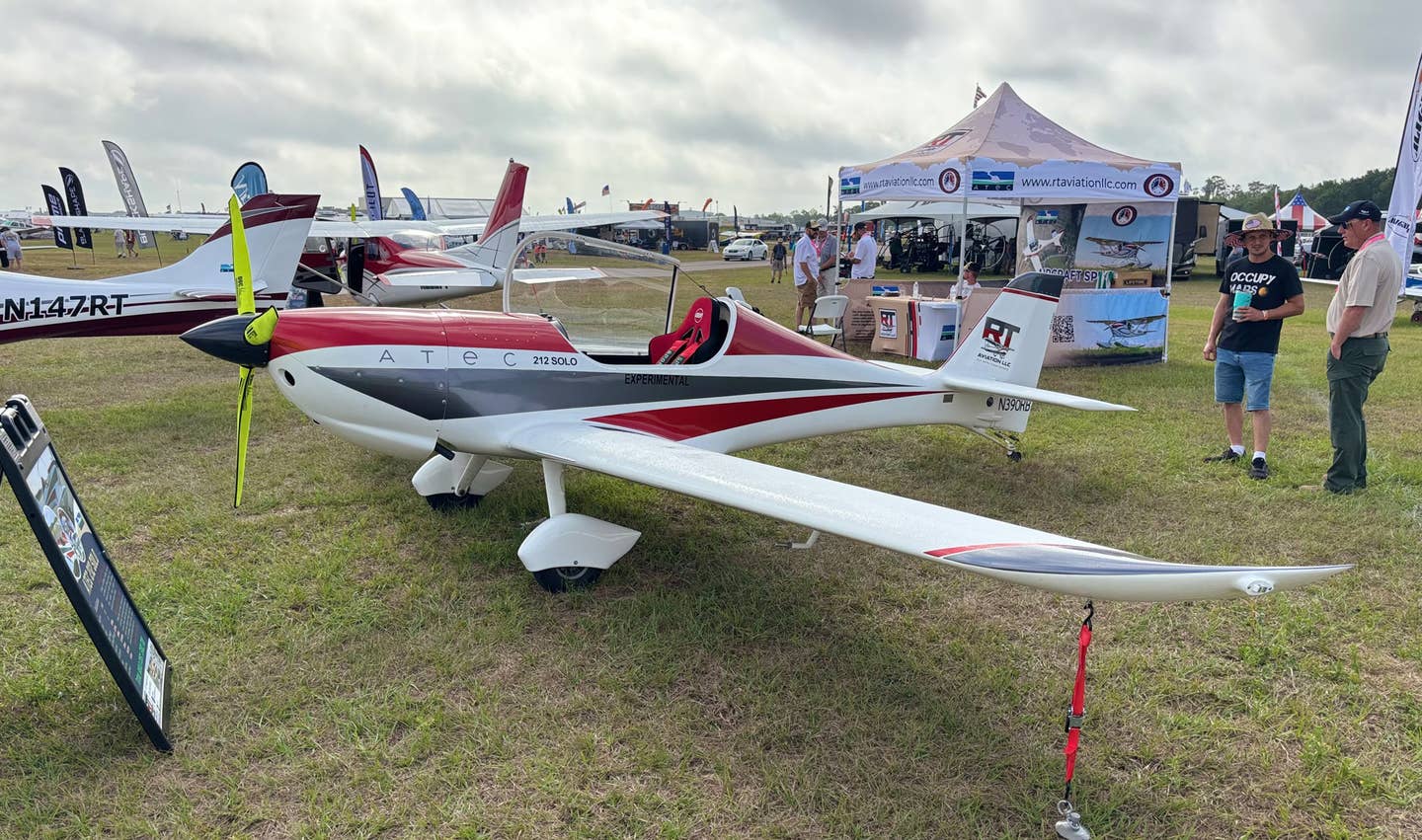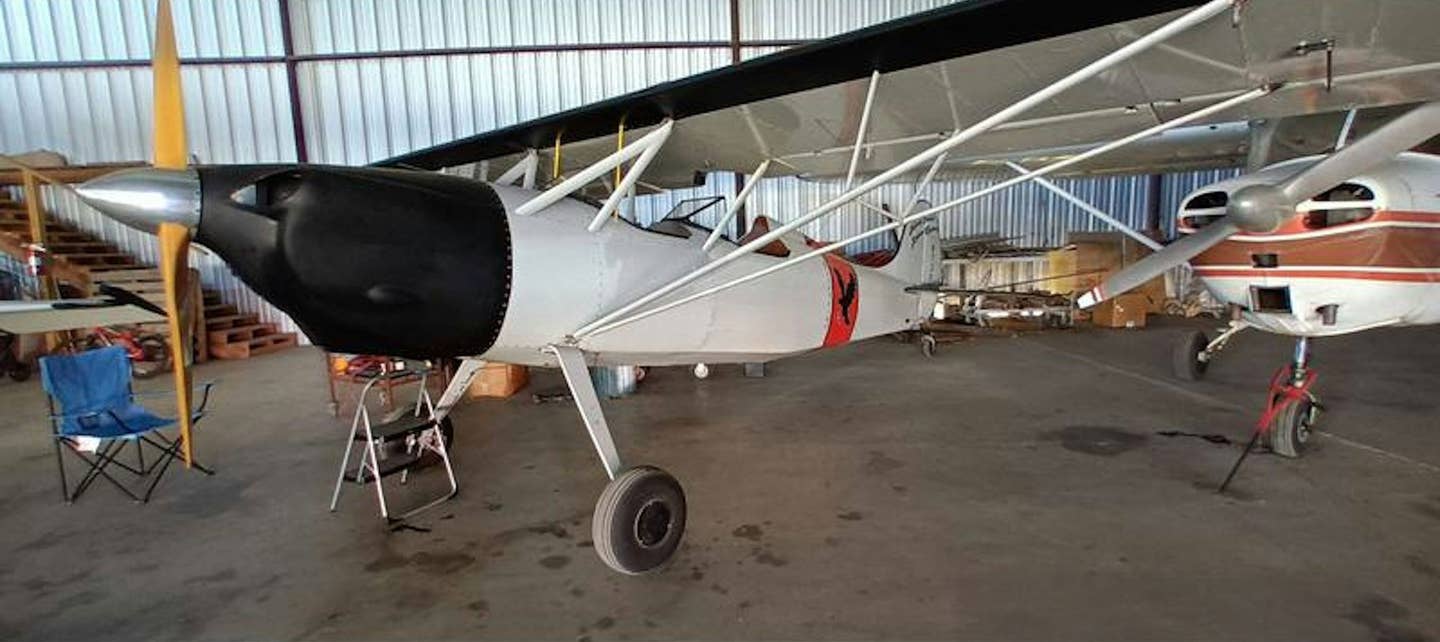Mooney M-18 Mite
The little personal airplane spawned the Texas manufacturer’s entire line.

The diminutive Mooney M-18 Mite featured a forward-tail design, retractable landing gear, and classic lines. Photo: Bill Larkin
As World War II ended, self-taught design legend Albert Mooney was not surprised to learn that the Army Air Corps had graduated over 250,000 pilots.
Would these pilots returning from the war want to own and fly a personal airplane, and if so, what would it look like? The Mooney M-18 Mite (Al’s 18th design) was the answer to the question. With its unique forward-tail design, retractable landing gear, and classic lines, it began the design philosophy for the over 11,000 Mooneys to follow.
Al Mooney’s journey to the diminutive M-18 Mite was not a straight line. A failed 1929 attempt to form the first Mooney Aircraft Company led to stints as the chief designer at Bellanca Aircraft and then Culver Aircraft. After graduating high school, he came up through the engineering ranks as a draftsman; Mooney’s designs were practical and efficient.
Like so many designers caught up in the march to war, his 1937 design of a two-seat Culver Cadet trainer soon morphed into a series of single-seat, optionally piloted, drone aircraft used to train anti-aircraft gunners. The PQ-14 Cadet was the most prolific of these tricycle gear (easier to take off and land under radio control?) wood and fabric planes.
Sadly, for postwar aviation enthusiasts, or happily if you were a U.S. Army or Navy gunnery student, most of the 2,000 or so Culver Cadets were shot down by friendly fire before the war concluded.
In 1946, Mooney left Culver Aircraft and made a second attempt to form a Mooney Aircraft Company. This time located at the Mooney “mecca”—Kerrville, Texas. Al and his main financial backer, Charles Yankey, another Culver expatriate, decided upon a single-seat, retractable monoplane. This M-18 would re-create the experience of flying a fighter plane on less than 50 hp.
The Mite featured a wooden wing spar with a plywood-covered leading edge and fabric covering aft of the spar. The wing featured a laminar flow design extending to the end of its generous flaps then a more conventional design forward of the ailerons. The conventional outer section helped with the low-speed handling issues that beset earlier laminar flow designs.
The fuselage, a combination of aluminum sheet, steel tubing, and wooden tail cone, featured the now iconic Mooney tail with a vertical leading edge and slanted trailing edge. Doing away with conventional trim tabs, the entire tail cone, including the vertical and horizontal tail surfaces, moved together to trim the aircraft.
Additionally, the Mite featured a “Safe-Trim” system that coordinated extension of the flaps with the elevator trim. A careful examination of the retractable landing gear finds all three are trailing links with a compact version of the Mooney rubber landing gear biscuit absorbing the shock. Landing gear extension and retraction was by a manual Johnson bar, a feature on the later four-seat Mooney line well into the 1960s.
Decades before the birth of the first light sport aircraft (LSA), the little Mooney, with its 26-foot wingspan, weighed a svelte 520 pounds empty and 780 pounds with the pilot on board and a few gallons of 80 octane avgas. Power for the first Mites was provided by a 25 hp, water-cooled Crosley automobile engine. This unique powerplant featured an overhead cam and was constructed of welded sheet steel, instead of the more traditional cast metal.
However, the little Crosley proved troublesome and was soon replaced by the proven air-cooled 65 hp Lycoming O-145 and later by the Continental A-65. The added ponies provided by these little four-bangers pushed the diminutive airframe to a cruise speed of over 130 mph and a climb rate of over 1,000 feet per minute while sipping a miserly 4 gallons per hour.
Accommodation for the pilot was, in a word, spartan. The Mite featured a sliding canopy, room for basic VFR instrumentation, and was bereft of an electrical system. A unique landing gear warning system consisted of a wheel-shaped flag mounted on a lever that rotated up above the glareshield when the throttle was pulled back and the landing gear was not down. The flag would wave back and forth in the pilot’s field of view until the gear was down and locked. Not a bad idea. Oh, and the fuel gauge was an angled tube mounted in the pilot’s headrest. It showed actual fuel quantity to those pilots agile enough to twist around, or those who owned a pocket mirror.
Hand-propping the little Mooney can be accomplished with the pilot seated on the wing, reaching forward to spin the prop with the right hand, while managing magnetos and throttle with the left. The next step involves carefully climbing into the diminutive cockpit, always aware of the spinning prop less than an arm’s length away.
Five different models of the Mite were produced between 1948 and 1955. According to the active Mooney Mite Site (mooneymite.org), 283 Mites were constructed. Of these approximately 60 are still flying and about twice that are still around in some shape or form. However, by the end of production, it cost more to build the little personal airplane than the market could bear.
Mite production ended in 1956 when the classic Mooney M-20 took its place. The M-20, which has spawned the entire line of high-performance Mooney singles, is in every respect an enlarged Mooney M-18 Mite.
Sadly, two years after the first flight of the M-20, Yankey, Mooney’s partner and principal financier, died unexpectedly, and Mooney left the company he created for a stellar career at Lockheed.
The Mooney M-18 Mite was a modest success. However, its major contribution to general aviation is that it inspired an entire line of Mooney singles that have flown nearly 40 million flight hours.
And did I mention that the Mooney Mite is a joy to fly? Light on the controls, responsive, quick, and agile.
With the canopy slid back, wind in your hair, you can just imagine the Walter Mittys of the aviation world reliving their exploits in this incredible plane!

Subscribe to Our Newsletter
Get the latest Plane & Pilot Magazine stories delivered directly to your inbox






